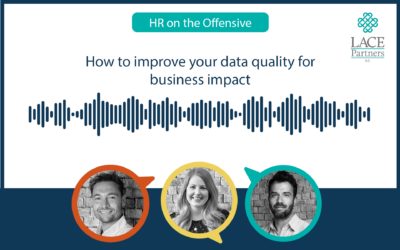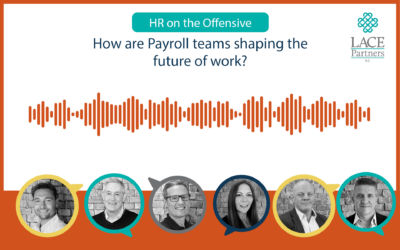![]() In our latest blog we speak with Dr Tracy Brower. Sociologist, author and VP of Workplace Insights at Steelcase. Dr Brower talks with Lace Partners’ Chris Howard and Chris Horton about the complexities surrounding the concepts of productivity and happiness at work. Big subjects. One half hour podcast.
In our latest blog we speak with Dr Tracy Brower. Sociologist, author and VP of Workplace Insights at Steelcase. Dr Brower talks with Lace Partners’ Chris Howard and Chris Horton about the complexities surrounding the concepts of productivity and happiness at work. Big subjects. One half hour podcast.
Here are the key takeaways from this fascinating episode, which you can find here in its entirety.
In a world where organisations are facing all kinds of challenges – some exacerbated by the pandemic and others associated with the cost of living crisis – how do they get the most out of their people? In other words, how do they boost productivity and ensure their employees are happy?
The answer lies in business leaders understanding – really understanding – the inescapable link between employee happiness and engagement. And this means delving into the realities of the workplace, how we affect our work, how it affects us, our relationship with others through our work and how work forms part of our very identity.
Rethinking leadership in the workplace
Most of us spend as much time at work as we do with our families. And that makes our managers extremely important for our mental health.
A recent study on this provides sobering results – 70% of people feel that their manager affects their mental health more than their doctor, their therapist and on par with their spouse (read more about this in Dr Brower’s article for Forbes).
And while this may make business leaders feel under yet more pressure, it also means there is the opportunity to rethink leadership.
Learning from past leaders – good and bad
The importance of work is not just about the amount of time we spend there. It’s also about understanding its importance as a way to understand ourselves and our contribution towards the community. It’s how we express our talents and how we make connections.
Often, the first-line manager we have is really formative in the way we learn and process leadership. Business leaders have such an important part to play in terms of helping people feel validated, feel seen and feel appreciated. Whether your first line manager was a good or bad leader will have helped you form your own ideas based on that experience.
Productivity, performance and employee happiness
We know that productivity is one of the major causes of concern for business leaders and HR teams. But when it comes to accurately defining productivity and workplace happiness, we have to stop and take a step back.
It’s not uncommon for business leaders to dismiss the very concept of employee happiness as somehow fluffy or meaningless. But research shows pretty definitively that happiness is directly linked with productivity and performance.
Happy employees are more engaged, they set bigger goals, they meet their goals, they plan to stick around and they in turn foster more widespread cultural positivity – like a virtuous circle. This link between happiness and performance permeates through several levels of society, from the workplace to a country’s GDP. It’s incontrovertible and vitally important, yet some leaders are resistant to its true value.
What holds leaders back from embracing happiness?
Why? Because often business leaders see people and business as two separate choices – that we need to choose to serve people or choose to get business results. This is likely at least partly because they simply don’t have the research and data to disprove this trap of binary choice.
The reality is that business results will always flow from the choice to do the right thing for people. The concept of reciprocity is within all of us and works within the workplace too.
Measuring the unmeasurable
We tend to overvalue the quantitative and undervalue the qualitative. Often we consider that which is difficult to measure as less important. It’s not easy to measure concepts like happiness and productivity. However, productivity should be viewed as an ingredient of the recipe for overall performance, rather than the only goal.
It’s necessary to strike a balance between efficiency and effectiveness. By redefining productivity as part of broader terms that include performance, innovation, collaboration, retention and engagement, we get something much more useful.
With measurement comes the issue of transparency. Much of the data employers have comes from self-reports, and often leaders won’t have access to all of the data about their workers. It depends on who is collecting it and for what purpose. It’s also common to collect tonnes of data without reflecting on its meaning, which makes finding it later on much more difficult.
Don’t ask questions you don’t want the answers to…
Collect only the data you actually need, and remember that there is a paradox when asking people if they are happy. People are far less likely to say they are happy if they are asked over and over again whether they’re happy – it’s human nature to become more sceptical and questioning when forced to reflect on this kind of topic.
More useful is to measure the ingredients of performance and the ingredients of happiness and extrapolate from that. Do people feel a sense of belonging? Do they feel supported in their growth? Are they committed to their work?
By combining this kind of data with HR records, it’s possible to get an accurate picture of the happiness of your workers. You already have certain data proxies within the organisation that can go hand in hand with sentiment-based research.
Agency and structure – from government to business leaders
Whether we’re talking about country leadership or company leadership, happiness comes down to being responsible to and responsible for.
Individuals are responsible for their own happiness, their productivity and their wellbeing – that’s the agency part of the equation. However, Governments, leaderships, and organisations are responsible to their workforce in terms of creating the conditions in which happiness and productivity can thrive – that’s the structure part.
HR plays a huge part in this with the ability to create the kinds of policies that truly empower people and allow them to participate fully in their working life.
Friendship at work
Friendship and work is another topic that is ultimately down to individuals. Some people thrive on close friendships with their colleagues where they’re comfortable sharing secrets, confiding in each other and sharing all kinds of experiences outside of work. Others benefit from a friendly workplace where the connections are available but not necessarily as close.
The wider point is that organisations and leadership need to be creating the kinds of conditions that allow for people to debate, disagree, connect and communicate in constructive ways. Workplaces should cultivate a sense of safety and belonging.
Recent sociological research shows that we need much more than simply being around other people to attain a sense of belonging. It’s about having a shared sense of social identity.
Connection and belonging in a post pandemic workspace
After so much ingenuity and innovation surrounding maintaining connectivity in a virtual space due to the pandemic, where should we be now? How do we determine which tasks should be in person and which can be virtual?
We have a new realisation and understanding of just how much we can achieve from a distance but human beings naturally and enduringly crave a face to face connection.
There has been an epidemic of anxiety, depression and loneliness since we were collectively forced apart by the pandemic. This correlates totally to the distance we are from each other, both literally and figuratively.
We need to figure out how and when we need to be together and remind ourselves just how critically important our relationships are with our colleagues.
No better time than right now to be an HR professional
Everything we’ve talked about here comes back to talent and people. And at the heart of that lies HR.
There are two incredibly important steps for HR professionals to take. One is to become that super-objective person that employees can go to and trust, the person that stands outside of their immediate sphere but represents safety and connectivity.
The second is to create the kinds of systems and policies that can truly develop leaders to support people’s mental health, or to promote real equity. HR can influence and shape all of these types of policies and systemic practices in truly impactful ways.
This blog skims the surface of the chat we had with Dr Brower. Find out much more detail by listening to the full conversation here. If you have questions on how you can boost your employees happiness, we’d love to talk. Reach out via the form below:






